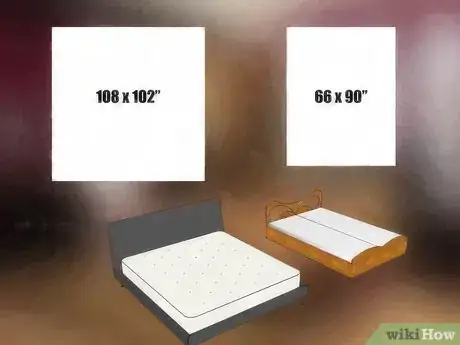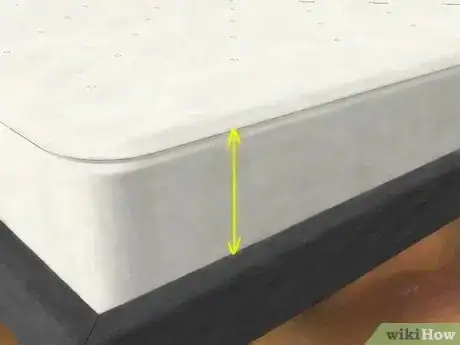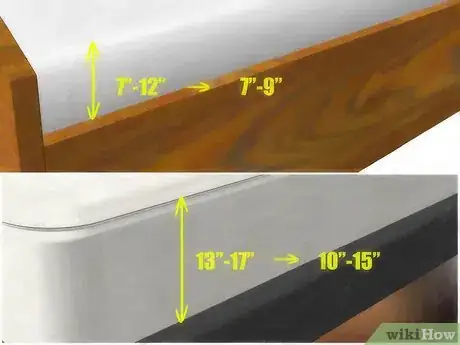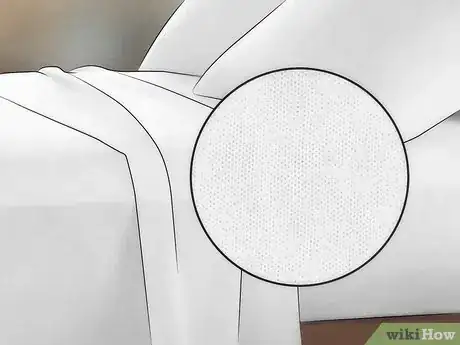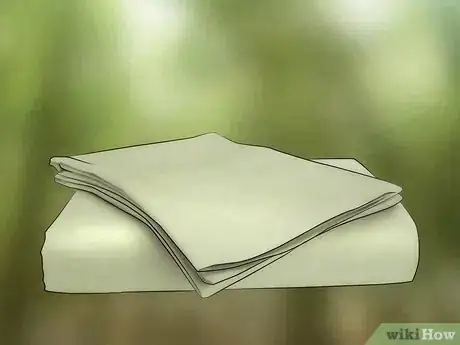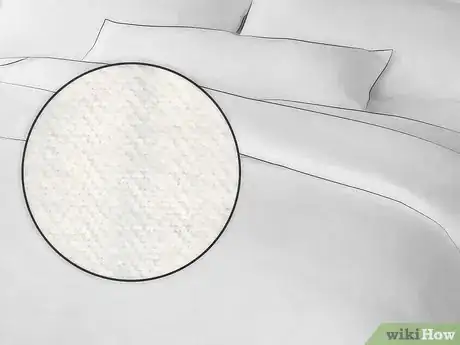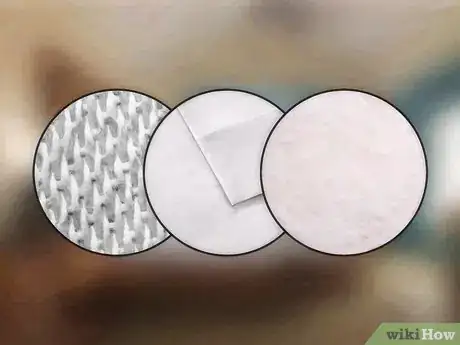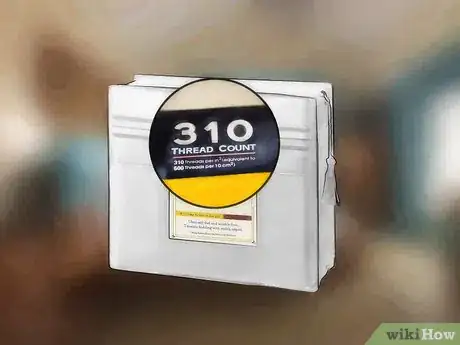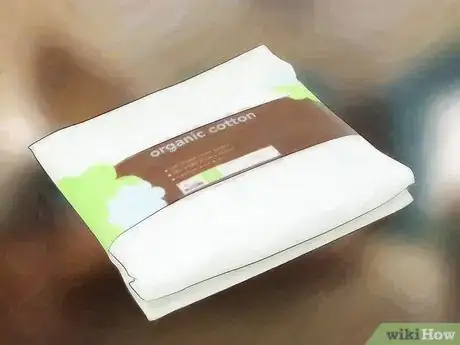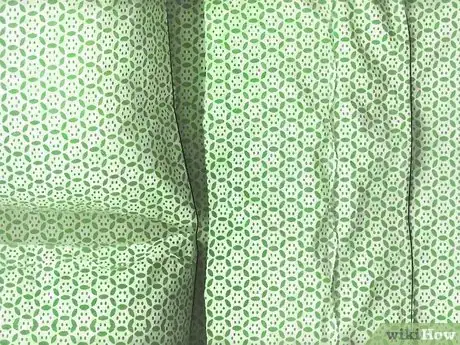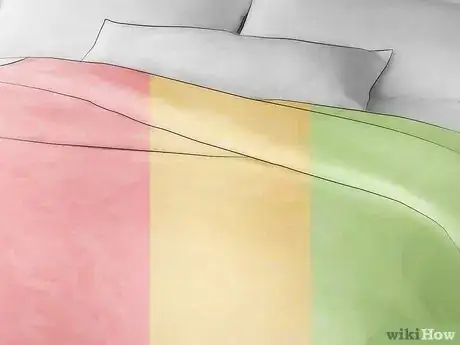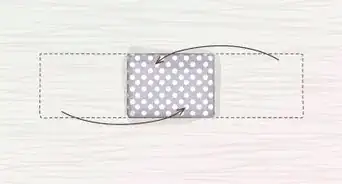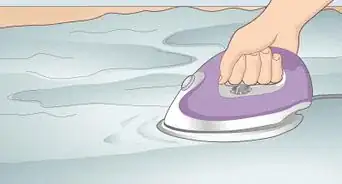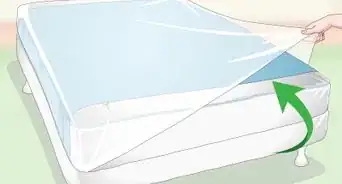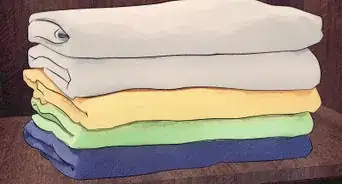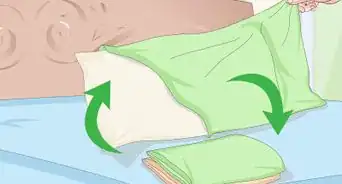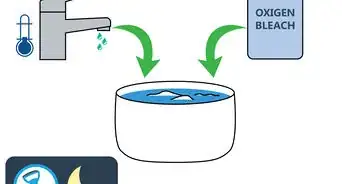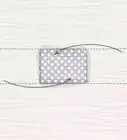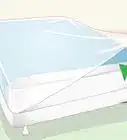This article was co-authored by Priscilla Bettencourt. Priscilla Bettencourt is an Home Stager, Interior Designer, and the Founder of Halcyon Home Staging + Design, a home staging business based in San Francisco, California. Halcyon specializes in expansive staging services geared to maximize a property's resale value and transform any home into an inviting environment for potential buyers. Halcyon has received the “Best of Houzz Service” Award in 2017, 2018, 2019, and 2020.
There are 8 references cited in this article, which can be found at the bottom of the page.
wikiHow marks an article as reader-approved once it receives enough positive feedback. In this case, 100% of readers who voted found the article helpful, earning it our reader-approved status.
This article has been viewed 74,633 times.
Bed sheets are a simple product but the choices can be overwhelming. A good night sleep has a profound effect on how you function and feel during the day, and the feel of sheets play a pivotal role in this equation. Make sure you choose sheets that are an appropriate size for you bed. You should also pick materials that are comfortable for you. You should also consider factors like dyes, thread count, and price.
Steps
Choosing the Right Size
-
1Pick sheets based on your mattress size. Sheets are measured based on the size of your mattress. At a department store, sheets should be listed as twin, full, double twin, king, queen, California king, and so on. A sheet's label should give you a sense of whether It's appropriate for your bed.[1]
- For twin beds, the standard measurement is usually 66 by 90 inches for a flat sheet and 39 times 75 for a fitted sheet. However, some twins are double twins. These are the kinds typically found in a college dorm. For a double twin, go for 39 by 80 inch fitted sheet. You can get by with a flat sheet fitted for a standard twin bed.
- For a full sized bed, the standard size of a flat sheet is 81x96 inches. For a fitted sheet, go for 54x75 inches.
- For a king sized bed, you'll need a 108x102 inch flat sheet and a 78x80 inch fitted sheet. For a queen sized bed, you'll need a 90x102 inch queen sheet and a 60x80 inch fitted sheet.
-
2Measure your mattress's height. Mattresses come in various heights. Some mattresses are thicker than others. When picking sheets, you'll need to know the height of your mattress. Take a tape measure and measure the side of the mattress. Most standard mattresses are 7 to 9 inches high, while some can be as much as 16 to 22 inches high.[2]Advertisement
-
3Choose the appropriate pocket size based on height. The pocket size of sheets varies. The pocket size you need depends on the height of your mattress.[3]
- A mattress that is 7 to 12 inches high will need a 7 to 9 inch pocket depth.
- A mattress that is 13 to 17 inches high will require a pocket depth of 10 to 15 inches.
- A mattress between 18 and 25 inches needs a pocket depth 15 to 22 inches.
Deciding on Material
-
1Go for cotton sheets as your first choice. Cotton is usually the best option when it comes to material. Cotton sheets tend to be the most breathable and comfortable, and also last a long time. They are also less prone to wrinkles.[4]
- Egyptian and pima cotton are generally the best options.
- You should also look for 100% organic cotton. Many brands of cotton are mislabeled and actually contain a lot of synthetic ingredients, so make sure you read the label and look for verification that the material is 100% cotton.
-
2Consider bamboo sheets if you want an eco friendly option. Bamboo sheets are often blended with cotton or other materials. They have become more popular recently. Many people enjoy bamboo sheets as they're made from sustainable materials. If you want an eco friendly option, consider going for bamboo.[5]
- Bamboo also sops up moisture easily. If you tend to sweat a lot at night, go for bamboo sheets.
-
3Go for a linen sheet if you live in a hot climate. If you live in a hot environment, you may want to go for linen sheets. Linen sheets tend to be highly breathable. They tend to reduce overall body heat, so they can be refreshing in a warm environment.[6]
- The one downside to linen sheets is that they wrinkle easily. You will have to do a lot of ironing if you select linen sheets.
-
4Pick the right weave. Weave refers to the manner in which your sheets are made. Weave is important as it tends to affect the feel of the sheets. Make sure to choose a weave that works for you.[7]
- A sateen weave provides a softer feel. If you want crisper sheets, go for a percale weave.
- Jersey sheets, also known as t-shirt sheets, tend to have a very slippery feel. They're usually best avoided. However, if you're on a budget and don't mind a slippery, heavier feel, you may want to opt for Jersey sheets. They may be cheaper than other brands.
- If you live in a cool environment, go for nubby cotton flannel sheets. They tend to keep you very warm.
Looking at Other Factors
-
1Pick an appropriate thread count. The thread count of a sheet affects its softness. Many people believe a higher thread count means softer sheets. However, many manufacturer's exaggerate thread count, so this is not necessarily always the case. In general, a thread count of over 200 is recommended for comfort. Anything above 800 is probably unnecessary.[8]
- You can identify fabricated thread counts by thread type. Thread that is 2-ply is often twisted around itself to create a higher thread count. However, as the thread is of less high quality, this does not mean the sheets will be softer. Be wary of sheets made from 2-ply thread.[9]
-
2Pay attention to finish. Most sheets are finished with a chemical process to keep them from wrinkling. If you're not averse to chemical-based products, wrinkle free sheets can require a lot less upkeep. However, if you're wary about chemicals, look for sheets labeled as organic.[10]
-
3Look at what types of dyes are used. If you're buying a patterned sheet, it may use a lot of dye. Your sheets may feel stiff and uncomfortable if you don't wash them a few times before use.[11]
- If you have a sensitivity to any type of dye, avoid getting sheets that contain that product.
-
4Pick the right color. Most varieties of sheets come in many different colors and patterns. Ideally, you'll want colors that match the scheme of your room. For example, if you have a room with blue wallpaper, you may want to go with blue sheets.
- Keep in mind dark colors hide stains better. If you're buying sheets for a very young child, who may have an accident in the bed, go for darker sheets.
- To give your room a crisp, fresh hotel feel, opt for neutral or white linens.[12]
Expert Q&A
-
QuestionWhat sheets are best if I'm staging a bedroom in a home I'm trying to sell?
 Priscilla BettencourtPriscilla Bettencourt is an Home Stager, Interior Designer, and the Founder of Halcyon Home Staging + Design, a home staging business based in San Francisco, California. Halcyon specializes in expansive staging services geared to maximize a property's resale value and transform any home into an inviting environment for potential buyers. Halcyon has received the “Best of Houzz Service” Award in 2017, 2018, 2019, and 2020.
Priscilla BettencourtPriscilla Bettencourt is an Home Stager, Interior Designer, and the Founder of Halcyon Home Staging + Design, a home staging business based in San Francisco, California. Halcyon specializes in expansive staging services geared to maximize a property's resale value and transform any home into an inviting environment for potential buyers. Halcyon has received the “Best of Houzz Service” Award in 2017, 2018, 2019, and 2020.
Home Stager & Interior Designer Keep it neutral, fresh, and clean. I always recommend white linens to give it that nice hotel feel.
Keep it neutral, fresh, and clean. I always recommend white linens to give it that nice hotel feel. -
QuestionWhat size fitted sheet do I buy for a Tempur-Pedic mattress?
 Community AnswerIt depends on the size of your mattress (twin, full, queen, or king).
Community AnswerIt depends on the size of your mattress (twin, full, queen, or king). -
QuestionWhat should I look for to avoid sheets that crinkle/fold up around the edges, especially at the top?
 Community AnswerLook for cotton sheets with a higher thread count.
Community AnswerLook for cotton sheets with a higher thread count.
References
- ↑ http://www.bhg.com/homekeeping/laundry-linens/linens/bed-sheet-buying-guide/
- ↑ http://www.bhg.com/homekeeping/laundry-linens/linens/bed-sheet-buying-guide/
- ↑ https://www.groupon.com/articles/how-to-buy-bed-sheets
- ↑ http://www.businessinsider.com/how-to-buy-sheets-by-thread-count-2014-12
- ↑ http://www.forbes.com/sites/houzz/2013/07/10/how-to-choose-the-perfect-bedsheets/#31c0c7fceee1
- ↑ http://www.forbes.com/sites/houzz/2013/07/10/how-to-choose-the-perfect-bedsheets/#31c0c7fceee1
- ↑ http://www.forbes.com/sites/houzz/2013/07/10/how-to-choose-the-perfect-bedsheets/#31c0c7fceee1
- ↑ http://www.huffingtonpost.com/2015/11/04/thread-count-does-not-matter_n_6121180.html
- ↑ http://www.businessinsider.com/how-to-buy-sheets-by-thread-count-2014-12
- ↑ http://www.huffingtonpost.com/2015/11/04/thread-count-does-not-matter_n_6121180.html
- ↑ http://www.realsimple.com/home-organizing/decorating/decorating-bedroom/when-buying-sheets
- ↑ Priscilla Bettencourt. Home Stager & Interior Designer. Expert Interview. 24 April 2020.
About This Article
Before you buy bed sheets, measure the height of your mattress to determine what pocket size you need. For example, if your mattress is 7 to 12 inches tall, you’ll need a pocket depth of 7 to 9 inches. Then, consider choosing cotton sheets, such as Egyptian or pima cotton, which are the longest-lasting, most comfortable, and least prone to wrinkles. Additionally, pick sheets with a thread count between 200 and 800, since most people find sheets in that range comfortably soft. For tips on how to choose a sateen, percale, or jersey weave for your sheets, keep reading!
